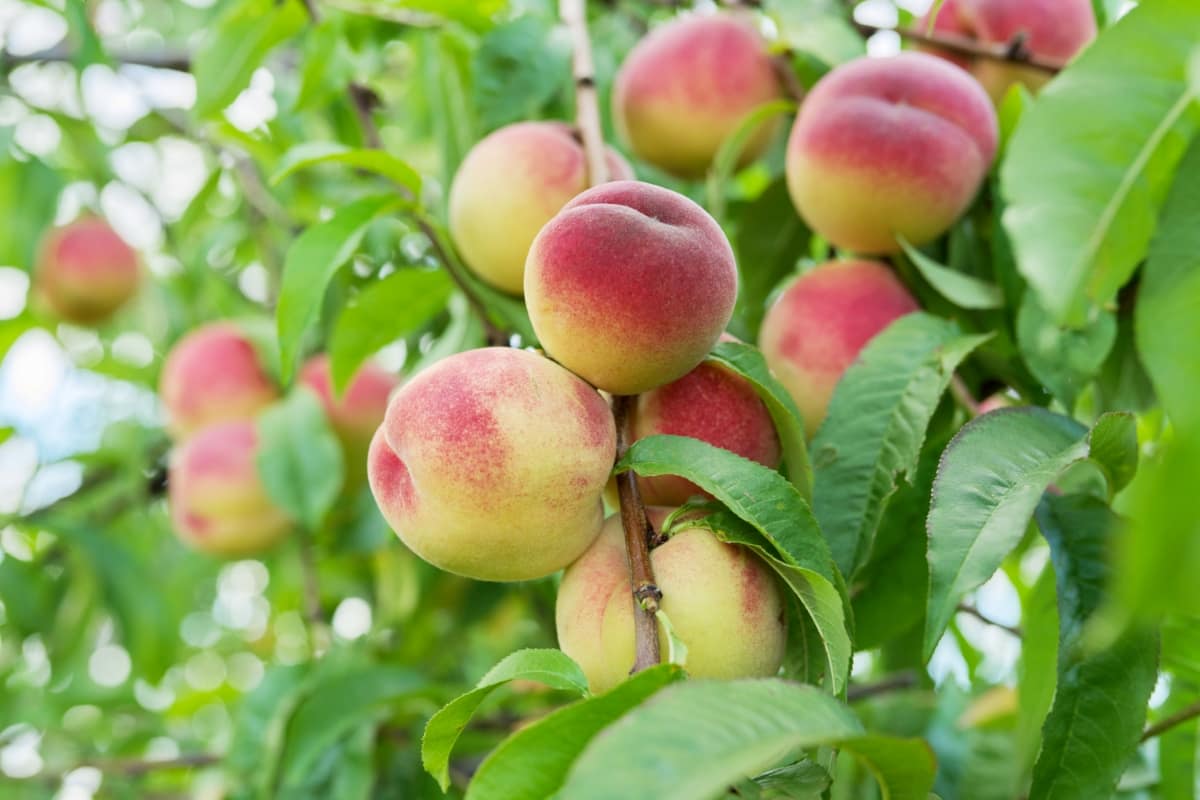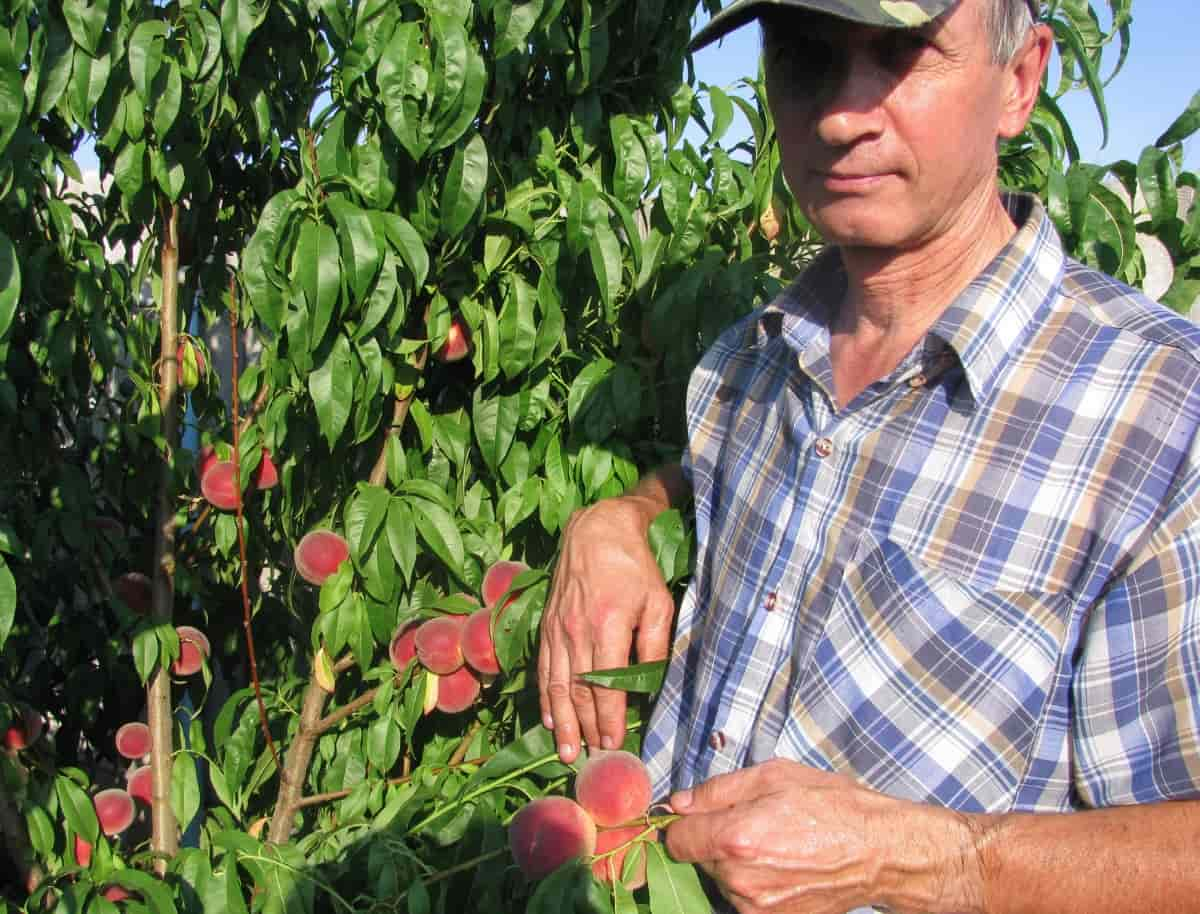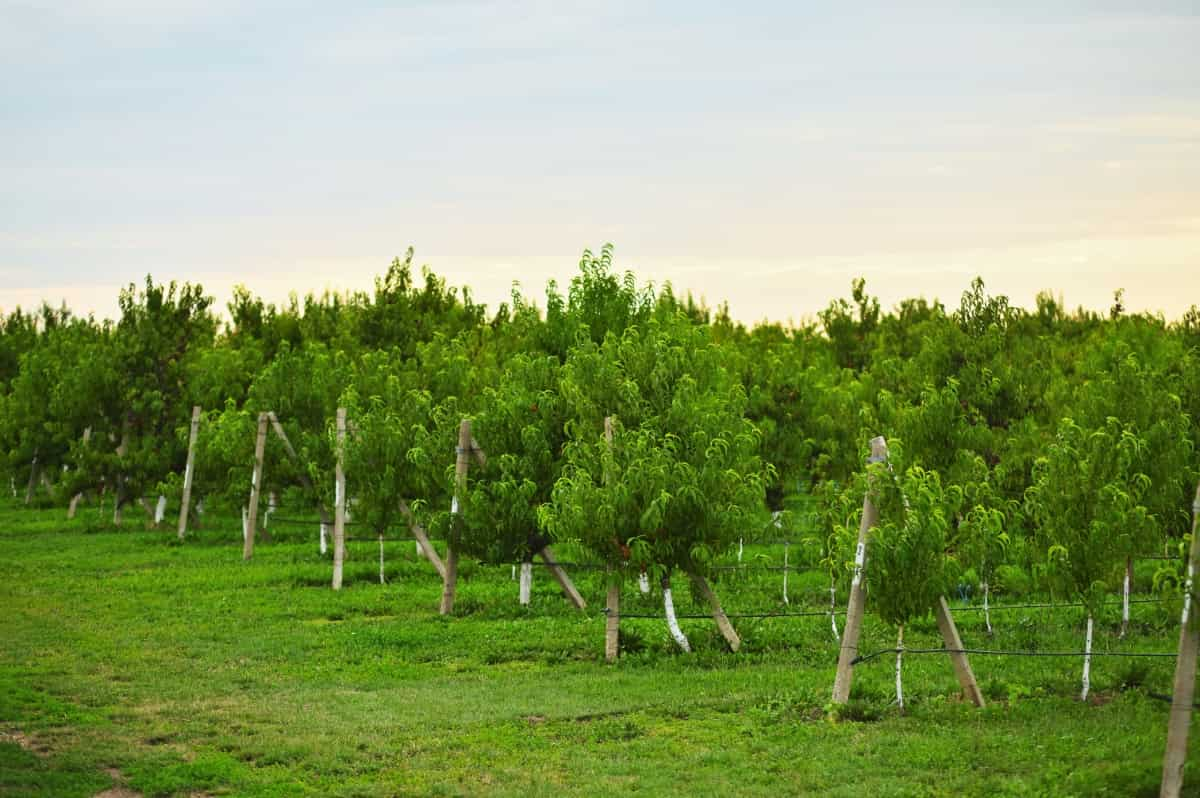The cultivation and production of peaches have been a significant aspect of agriculture for centuries. As one of the most popular fruits worldwide, peaches are known for their juicy and flavorful characteristics. There are about 25-40 tons of peaches per hectare in a mature commercial orchard of 500-800 open center (open vase) trained peaches.

To ensure a successful peach harvest, it is crucial to understand various factors such as peach yield per hectare, harvesting methods, and storage techniques. This document will provide an overview of these key aspects, offering valuable information for farmers and growers involved in peach cultivation.
Peach Yields Per Hectare
Factors Affecting Peach Yield Per Hectare
- Climate: One crucial factor is climate. Peach trees thrive in regions with moderate temperatures, as extreme heat or cold can hinder their growth and development.
- Soil: Another determinant is soil quality. Peaches require well-drained soil with good fertility levels to flourish.
- Water: Water availability is also vital, as adequate irrigation ensures optimal fruit production.
- Pest and disease: Pest and disease control measures are essential in maintaining peach yield, as certain insects and pathogens can significantly reduce productivity.
- Pruning: Lastly, proper pruning and tree management techniques are crucial in achieving high peach yields per hectare.
Best Practices for Maximizing Peach Yield Per Hectare
- First, choose the right peach suitable for your climate and soil conditions.
- Ensure proper orchard layout and spacing to optimize sunlight exposure and airflow.
- Implement a regular fertilization program based on soil tests to provide adequate nutrients.
- Prune peach trees annually to promote proper growth and fruiting.
- Regularly monitor and control pests and diseases with appropriate measures. Efficiently manage irrigation to prevent water stress.
- Finally, harvest peaches at the right stage of ripeness to ensure maximum flavor and quality.
Traditional Harvesting Methods for Peaches
Traditional harvesting methods for peaches have been practiced for centuries, ensuring a successful yield of this delicious fruit. The first step is to identify when the peaches are ripe for picking. Their color determines this, as they should have a vibrant orange or yellow hue. Once identified, a ladder is used to reach the higher branches where the ripe peaches are located.
In case you missed it: Natural and Organic Ways to Treat Peach Leaf Curl: Fix With Effective Home Remedies

Care must be taken to avoid damaging the tree or the fruit during the harvest. The peaches are gently plucked from the tree, being mindful not to bruise or drop them. Traditional harvesting methods for peaches have stood the test of time, preserving the quality and flavor of this beloved fruit.
Modern Harvesting Techniques for Peaches
Modern harvesting techniques for peaches have revolutionized the way farmers gather their fruits. These techniques maximize efficiency and minimize damage to the delicate peaches.
- One popular technique is using mechanical shakers, gently vibrating the tree, causing the peaches to fall into a catching frame.
- Another method is specialized picking tools, such as shears or clippers, which allow workers to detach the peaches from the tree carefully.
- Additionally, some farmers utilize conveyor belts to transport the harvested peaches directly into sorting and packaging machines.
These modern techniques make harvesting faster and more efficient and ensure that the peaches reach the market in optimal condition.
Post-harvest Handling and Storage of Peaches
It is important to handle peaches with care to avoid bruising or other physical damage. This includes using soft and clean utensils during sorting, grading, and packing. It is also advisable to handle the fruit gently to prevent any unnecessary pressure that might lead to bruising. Temperature and humidity levels are in determining the storage life of peaches. Peaches should be stored at temperatures around 0°C to 2°C. This helps slow the ripening process and prolong the shelf life of the fruit. High humidity levels should be avoided, as they encourage the growth of mold and decay.
Optimal Storage Conditions for Peaches
- Temperature: Peaches are sensitive to temperature fluctuations and should be stored at a specific temperature range. Ideally, the temperature should be maintained between 0°C and 2°C.
- Humidity: Maintaining the right humidity level is crucial for preserving the texture and juiciness of peaches. The ideal humidity range for storing peaches is between 85% and 90%.
- Ventilation: Proper airflow is essential to prevent excess moisture accumulation and maintain peaches’ freshness. Ensure the storage area is well-ventilated to promote air circulation around the fruit.
- Packaging: Storing peaches in a single layer is advisable to protect them from bruising and damage. Avoid overcrowding the fruit, leading to premature ripening and increased spoilage.
In case you missed it: 9 Causes of Dying Peach Trees and How to Fix Them?

Long-Term Storage Methods for Peaches
Long-term storage methods for peaches are essential to ensure their quality and freshness for an extended period. One effective method is freezing. To freeze peaches, start by blanching them in boiling water for a minute. After that, transfer them to an ice bath. Once cooled, peel and pit the peaches, then slice or keep them whole.
Place the prepared peaches in airtight containers or freezer bags to remove any excess air. Label the containers or pots with the date and store them in the freezer at -18°C or below. Frozen peaches can last up to 10-12 months, making them available for various culinary uses throughout the year.
Quality Assessment and Grading of Stored Peaches
The quality assessment and grading of stored peaches is essential to ensure the fruit’s freshness and marketability. Several factors are considered when evaluating the quality of stored peaches. These include appearance, flavor, texture, and overall condition. Peaches should have vibrant colors, a firm texture, and a sweet aroma.
Any signs of decay, bruising, or mold indicate a lower quality. Grading is done based on size, shape, and color consistency. The highest quality peaches are those that meet the desired criteria and are free from defects. Proper quality assessment and grading of stored peaches contribute to customer satisfaction and a successful market.
Preservation Techniques for Extending Peach Shelf Life
- Firstly, refrigeration is a simple and effective method. Keeping peaches between 0-2°C slows the ripening process and delays decay.
- Secondly, canning is a popular preservation technique. Peaches can be peeled, sliced, and preserved in sugar syrup or juice.
- This method allows peaches to be enjoyed long after the harvest season. Finally, freezing is another option. Peaches can be sliced and frozen later in smoothies, desserts, or preserves. By employing these preservation techniques, the shelf life of peaches can be significantly extended.
Economic Considerations in Peach Production, Harvesting, and Storage
Economic considerations are crucial in peach production, harvesting, and storage. Farmers need to carefully assess the costs involved in these processes to ensure profitability. Factors such as land preparation, irrigation, fertilization, and pest control in peach production contribute to the expenses.
In case you missed it: How to Increase Flowers in Peach: Explained in 10 Simple Steps for Higher Yield and Profit

Efficient harvesting techniques, including labor costs, equipment maintenance, and transportation, must be considered to optimize returns. Additionally, the cost of storing peaches after harvest, including refrigeration and packaging, should be evaluated. Proper planning and cost analysis are essential to minimize expenses and maximize profits in peach production, harvesting, and storage.
Conclusion
Understanding the peach yield per hectare, selecting the appropriate harvesting method, and implementing proper storage techniques are essential for successful peach farming. By optimizing these factors, farmers can maximize their yield, maintain fruit quality, and ensure a longer shelf life for their peaches.
- Feed Your Flock for Less: Top 10 Tips to Save on Chicken Feed
- Ultimate Guide to Ossabaw Island Hog: Breeding, Raising, Diet, and Care
- Hatching Answers: The Top 10 Reasons Your Chickens Aren’t Laying Eggs
- Eggs and Economics: Breaking Down the Cost of Raising Backyard Chickens
- Defend Your Greens: Proven Methods to Keep Iguanas Out of Your Garden
- Ultimate Guide to Cinnamon Queen Chicken: A Comprehensive Guide for Beginners
- Ultimate Guide to California Tan Chicken: Breeding, Raising, Diet, Egg-Production and Care
- Ultimate Guide to Marsh Daisy Chicken: Breeding, Raising, Diet, and Care
- 10 Types of Chicken Farming Businesses You Can Start for Profits